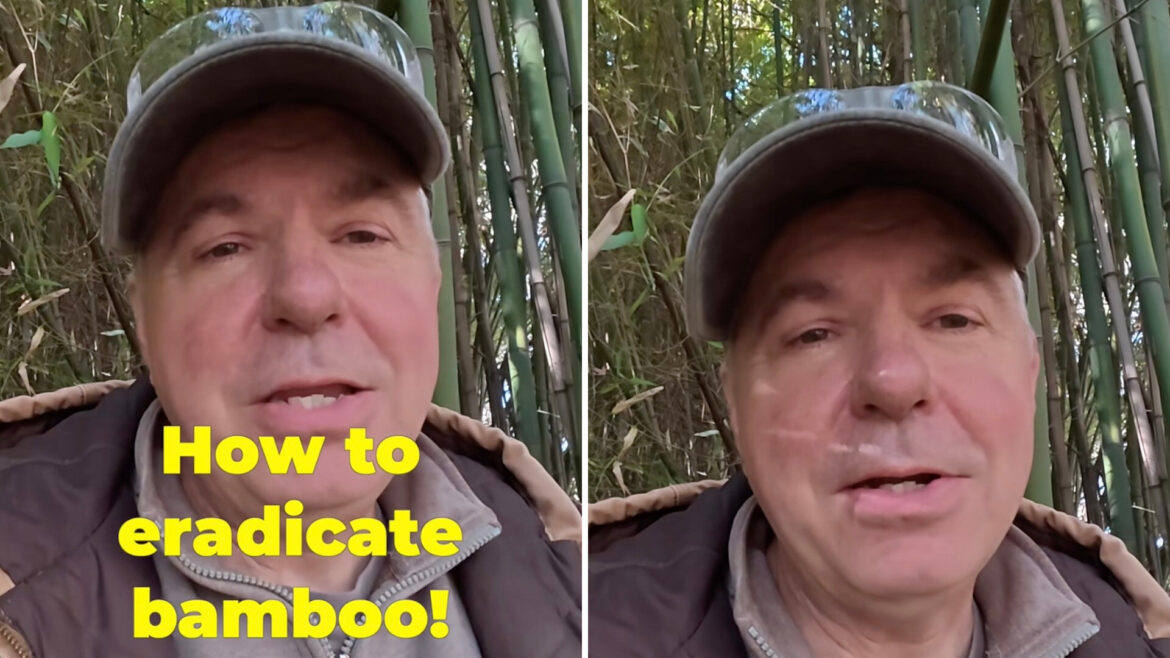With just a pair of gardening shears and a lot of patience, one gardener took on one of the toughest invasive plants — and won. Now, he’s sharing his effective bamboo eradication method to help other homeowners defeat the relentless plant.
In a TikTok, Ed Masker of My Cluttered Garage details how he fights invasive “running bamboo” with patience, persistence, and plenty of trimming.
His tactic is simple. “If you see a new shoot come up, get out there right away and cut it all the way to the ground,” he says of the method.
@myclutteredgarage
How to get rid of bamboo! This is the best way to kill bamboo but it takes time. #mcgtv #mcgtube #bamboo
♬ original sound – My Cluttered Garage
Masker explains that this approach works by “choking out” the root system. By continually cutting back new shoots, the plant can’t photosynthesize or store enough energy to survive. Eventually, the root system dies out from lack of nourishment.
But the tactic takes patience.
“It took me three or four summer seasons to get it under control,” Masker says in the video. “I’d go out there and honestly in a day, I’d see a piece that was two feet tall.”

Mitsubishi Electric’s efficient heating and cooling HVAC solutions can help you stay comfortable no matter the weather or region. You can even regulate temperatures in each room with individually controlled all-electric heat pump systems.
With an energy-efficient, all-climate system from Mitsubishi, you can reduce the amount of energy needed to heat and cool your home, receive up to $2,000 in tax credits, and get peace of mind knowing you’re choosing rigorously tested, high-quality products.
But persistence paid off. Eventually, Masker noticed the bamboo shoots becoming thinner and weaker — a sign that his efforts were effective.
Other TikTokers who have dealt with a bamboo invasion were quick to comment and commiserate.
“It spreads so bad,” one commenter wrote. “I hate it!”
Another simply summed up the secret to success: “Consistency.”
TCD Picks » Upway Spotlight
💡Upway makes it easy to find discounts of up to 60% on premium e-bike brands
Although some bamboo species are native to parts of the United States, the varieties most associated with the plant are native to Asia. Invasive plants — like Asian bamboo — are stubborn and aggressive, often outcompeting native species for essential resources like sunlight, water, and nutrients. Over time, this can lead to the decline, or even extinction, of local plant populations.
Beyond crowding out native plant species, invasive plants can disrupt entire ecosystems by altering soil chemistry, reducing biodiversity, and eliminating food sources for native wildlife. Once established, these plants are notoriously difficult and expensive to remove, often requiring repeated and specialized treatments to prevent regrowth.
Landscaping with native plants, however, offers a sustainable and cost-effective alternative. Because native species are naturally adapted to local climates and soils, they reduce the need for fertilizers, pesticides, and excessive watering. As such, native plants help foster a thriving environment for pollinators and native species that’s chemical and toxin-free — all while helping to lower your water bill.
So nix the bamboo and go native. If you’re interested in finding plants native to your region, the Xerces Society for Invertebrate Conservation keeps a detailed directory.
Join our free newsletter for easy tips to save more and waste less, and don’t miss this cool list of easy ways to help yourself while helping the planet.


Comments are closed.